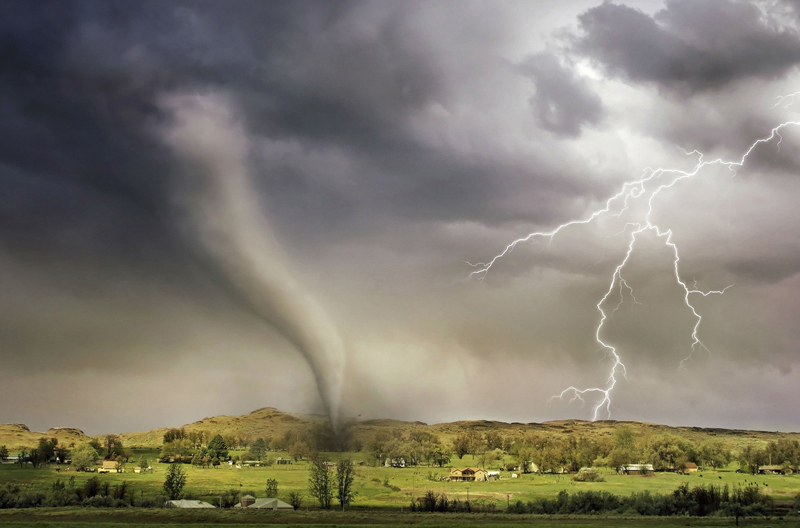Tornadoes are nature’s fury unleashed, leaving a path of devastation in their wake. For businesses, tornado season can pose significant risks, jeopardizing not only the physical infrastructure but also the livelihoods of employees and the future of the company.
Understanding the Threat
Tornadoes are unpredictable, violent storms characterized by rotating columns of air that can cause extensive damage within seconds. The United States experiences a high number of tornadoes each year, primarily in the region known as “Tornado Alley.” However, tornadoes can occur in various parts of the country, making preparedness crucial for businesses nationwide.
Protecting Your Business Infrastructure
Assess Vulnerabilities: Conduct a thorough evaluation of your business premises to identify potential vulnerabilities. Engage professionals to assess the structural integrity of buildings and make necessary upgrades to enhance tornado resistance.
Implement Mitigation Measures: Installing storm shutters, reinforcing roofs, and securing loose objects can significantly minimize damage caused by strong winds. Designate safe areas within your building where employees can seek shelter during an emergency.
Develop a Continuity Plan: Prepare a comprehensive business continuity plan that outlines emergency procedures, communication protocols, and employee responsibilities. Regularly review and update this plan to ensure its effectiveness.
Back up Data: Store critical business data and files in secure off-site locations or on cloud-based platforms. Regularly back up important information to prevent permanent loss in case of tornado-related damage.
Coverage Options
Ensure your business property insurance policy includes coverage for tornado-related damage. Familiarize yourself with the policy’s terms, conditions, and exclusions to understand the extent of coverage provided.
Business Interruption Insurance: Consider adding business interruption insurance to your policy. This coverage helps protect against financial losses resulting from interrupted operations due to tornado damage.
Insuring to Value: Discuss with your insurance carrier to ensure your operation is insured to value. This provision can solidify additional expenses incurred to expedite repairs and resume business operations swiftly.
Review Policy Limits: Regularly assess your insurance policy limits to ensure they adequately reflect the value of your business assets and potential rebuilding costs. Update coverage limits as your business grows to avoid being underinsured.
Preparing Employees
- Educate and Train: Conduct regular training sessions to educate employees about tornado safety protocols, including evacuation routes, shelter locations, and communication methods during emergencies. Ensure everyone knows how to respond swiftly and calmly.
- Emergency Supplies: Stock emergency supplies, such as first aid kits, flashlights, batteries, and non-perishable food items, in designated safe areas. Regularly check and replenish these supplies as necessary.
- Communication Plan: Establish an effective communication plan to keep employees informed during severe weather events. Use multiple channels, such as email, text messaging, and social media, to relay updates and instructions.
Tornadoes are formidable forces of nature that can wreak havoc on businesses. However, by taking proactive measures and working closely with your insurance carrier, you can protect your business from significant financial losses and ensure a speedy recovery. Assessing vulnerabilities, implementing mitigation measures, reviewing insurance coverage, and educating employees are essential steps in safeguarding your business during tornado season. Remember, investing in preparedness today can save your business tomorrow. For more information on how to better equip your business from tornadoes and other forces of nature, connect with your local loss control representative today. You can also find valuable resources through IBHS at disastersafety.org on how to prepare for tornadoes including severe weather preparedness tools and business continuity plans.

